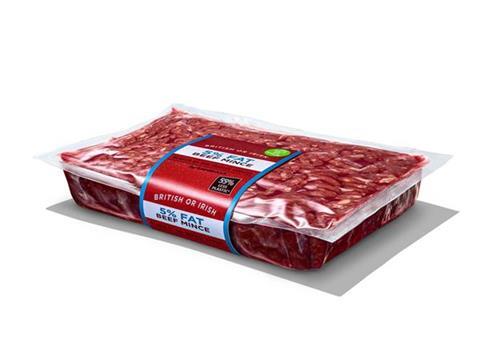
In April, we reported on the overwhelmingly negative consumer feedback to Sainsbury’s new vacuum packs for its beef mince range – which the retailer implemented in a bid to reduce its usage of plastic. In this article, Robert Lilienfeld, founder and executive director of sustainable packaging think tank SPRING, gives his views on why the solution is a ‘complete failure’.
I’ve been asked by one of the editors here at Packaging Europe to comment on a recent article in which Sainsbury promotes its new vacuum pack, source-reduced beef mince packaging, but customers take to social media to disparage it.
In my opinion, both the concept and the promotion are complete failures, Here’s why:
Wrong package
While this package probably does a better job of maintaining freshness and safety, the result is a purplish color in-store that consumers don’t find to be appealing. Thus, there will be slower overall sales, more markdowns, and greater food waste.
Wrong message
What value is there to the concept of “Same Quality, New Packaging”, especially when the meat looks purple rather than bright red? Further, there is no mention of the consumer benefits, which are based on this overall concept: Less plastic plus longer shelf life equals less waste.
Wrong color
Bright green on a meat package? No one wants to see anything green on top of their meat. It screams spoilage. Maybe dark green would work. Maybe.
Takeaways for packaging designers and marketers
1. The first rule of sustainable packaging is to ensure that consumers receive the product value they are paying for. It is up to the marketing team to determine the proper combination of functional, cost, environmental, and perceptual preferences.
2. Decisions must be made holistically, by all involved departments, and at the same time. There will be tradeoffs between what the science says and what the consumer says.
3. Work from a long-term plan that celebrates progress and does not rely on one-off “silver bullet” approaches. These are few and far between.
I applaud Sainsbury for doing the right thing from a technical perspective. The lesson here is that perception can, and usually does, trump reality. But if you start from that perspective, you can still make meaningful progress that will educate consumers while building sales and market share.
If you liked this article, you might also enjoy:
McKinsey on whether or not on-pack sustainability claims affect consumer spending
A deep dive into the most important packaging sustainability trends and solutions




















1 Reader's comment